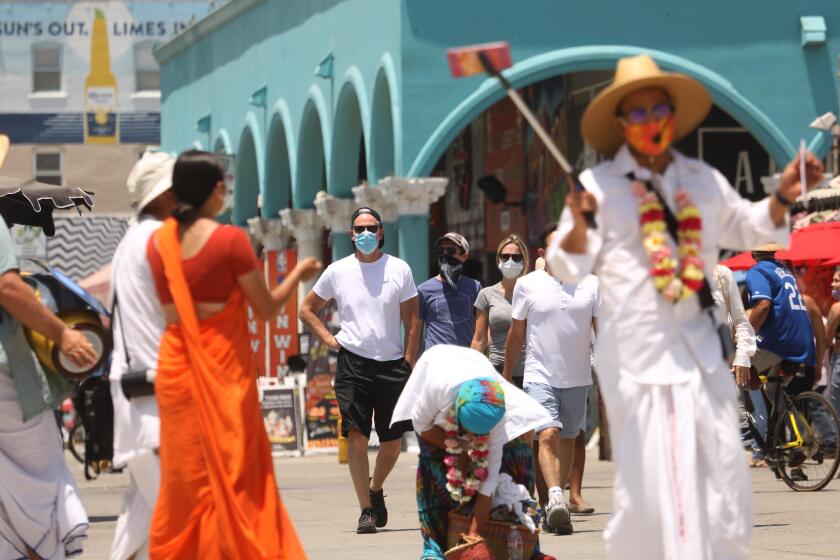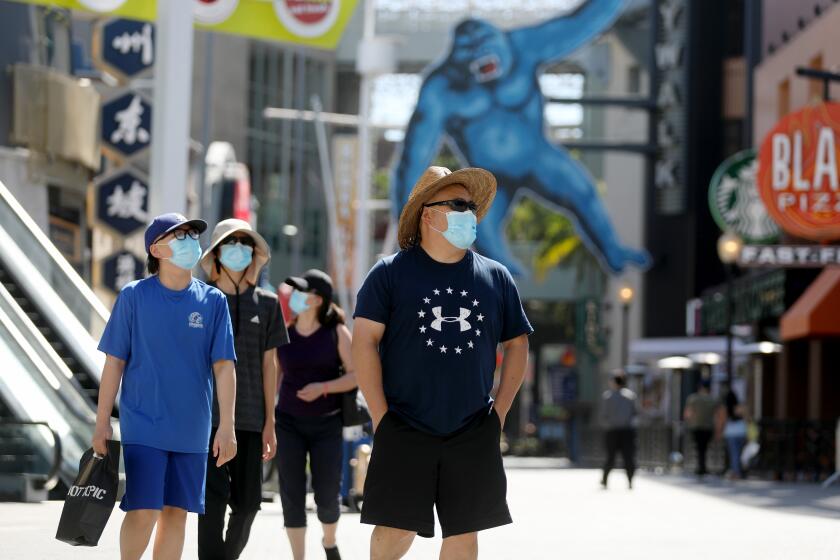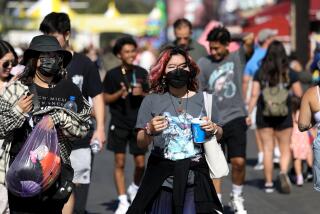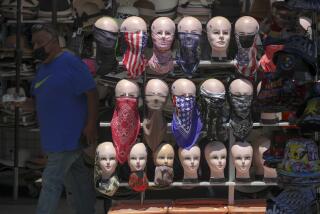As coronavirus cases surge, L.A. County death toll tops 3,500
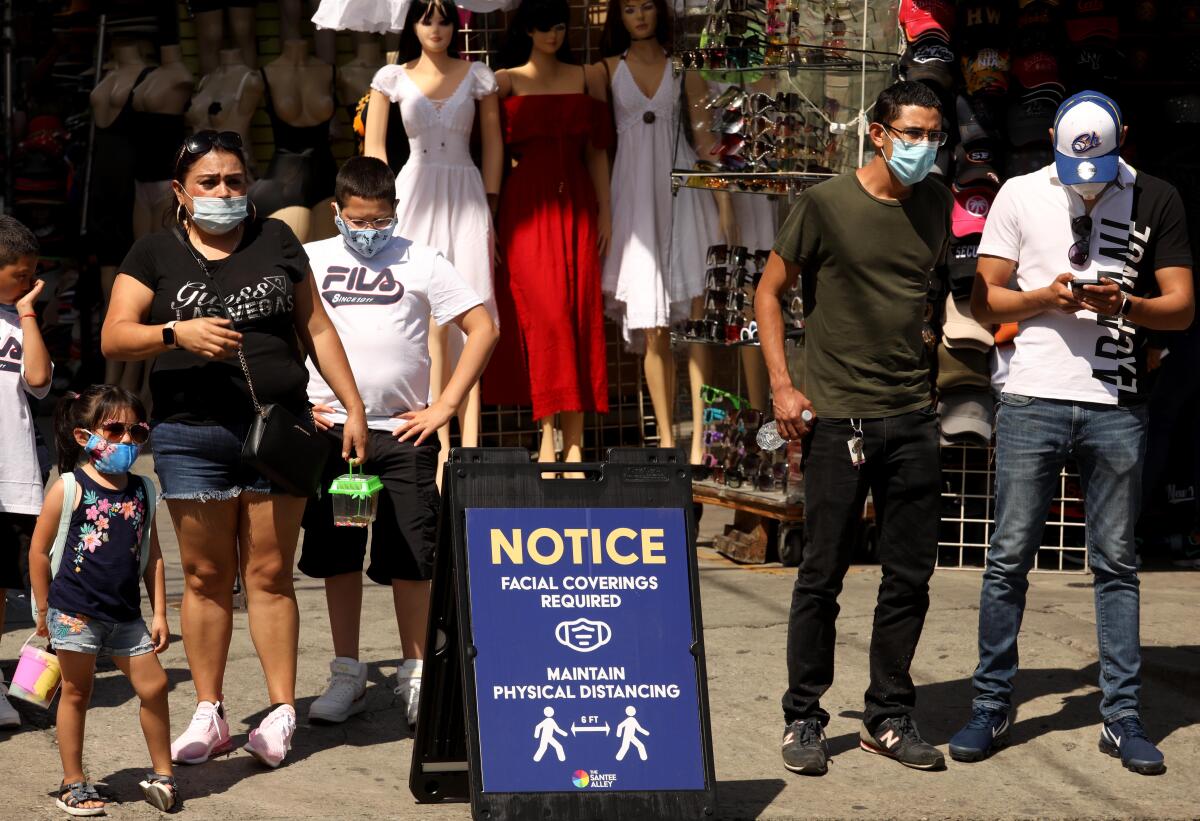
- Share via
Los Angeles County officials on Monday reported an additional 1,584 COVID-19 cases and 48 related deaths, raising the county’s death toll to more than 3,500.
This comes as the number of coronavirus infections continues to increase across the state. Amid the spike, California is monitoring additional counties for surges in cases and hospitalizations, Gov. Gavin Newsom announced Monday.
San Diego, Marin, Madera and Colusa counties have been added to the state’s watch list, which now includes 23 of California’s 58 counties that have been flagged for not meeting the state’s objectives in curtailing the spread of the virus. The other counties on the list are Contra Costa, Fresno, Glenn, Imperial, Kern, Kings, Los Angeles, Merced, Monterey, Orange, Riverside, Sacramento, San Bernardino, San Joaquin, Santa Barbara, Solano, Stanislaus, Tulare and Ventura.
The entire state is continuing to see an increase in cases, which now top 271,000, according to the Los Angeles Times tracker. The death toll, too, is increasing, with more than 6,400 deaths reported as of Monday.
The rate of deaths has not increased at the same speed as the number of cases and hospitalizations, however. Officials say that’s partly because new cases are now skewing more heavily toward younger people, and fewer deaths are being reported in congregate settings, such as nursing homes, that were once hot spots for the virus.
In Los Angeles County, officials said the holiday weekend saw the highest single-day count of new cases since the pandemic began: 3,200 on Friday.
But it’s possible the toll will spike again.
“Deaths will often lag behind slightly as much as one to three weeks,” Public Health Department Director Barbara Ferrer said, noting that those who have died are often sick or hospitalized for weeks before they succumb to the illness.
People between the ages of 18 and 41 now account for more than 50% of new cases in the county, health officials said. Hospitalizations among this age group, as well as those between 41 and 64, have also risen, while hospitalizations of those 65 and older have declined.
Officials said the seven-day average percentage of those testing positive for the virus has climbed to nearly 10%.
Testing remains critical as an indicator of spread, but as demand has increased, shortages in testing capacity have persisted in recent weeks.
On Monday, the city-run testing facility at Dodger Stadium — the largest in the county — was closed. According to L.A. Mayor Eric Garcetti’s office, the closure was scheduled, and testing will resume Tuesday.
“No appointments were canceled,” press secretary Andrea Garcia said Monday afternoon. “City sites provided 2,800 tests today and will provide 80,000 tests this week.”
County officials said Monday they are exploring the possibility of adding five to 10 more COVID-19 testing facilities, while also increasing the number of available testing slots.
“We opened 6,000 slots this morning,” Health Services Director Dr. Christina Ghaly said. “Those are [now] full.”
The number of hospital patients with confirmed coronavirus infections jumped 41% in the last three weeks in Los Angeles County.
Before the extended Fourth of July weekend, state and local officials shut down beaches, bars and dine-in restaurants in an effort to limit social gatherings, which have been blamed for some of the increases in the number of COVID-19 cases.
In terms of spread that might have occurred over the holiday weekend, it will be a couple of weeks before the numbers are in, health officials said
“We won’t know for another 14 days what the impact of the holiday weekend is,” Ferrer said, noting that extensive gatherings over the Memorial Day holiday led to an increase in infections two weeks later.
Still, the weekend saw increased infection rates in various parts of the state.
In Orange County, public health officials reported 663 new cases Sunday, raising the total to 16,854. In addition, the county reported three more deaths, bringing the total to 366.
On Monday that count spiked again, due to reports from backlogged test results. The county reported 1,028 additional cases, 1,013 of which were from specimens collected between June 20 and July 3; the others were collected before June 19.
“With cases of COVID-19 in California increasing over the last six weeks, I ask the residents and visitors of Orange County to please wear a face covering when you are in a public place and unable to properly social distance, as well as following hygiene and social distancing guidance,” Supervisor Michelle Steel said in a statement. “This is of the utmost importance to protect your health and the health of others, so that we can return back to normal as quickly as possible.”
Riverside County reported a similar spike in cases, recording more than 1,105 Monday.
Last week, Dr. Clayton Chau, director of the Orange County Health Care Agency and the county’s interim health officer, said the county had mistakenly inflated data indicating the number of tests that had been conducted, an error that may have painted a rosier picture of the pandemic in the region.
In Los Angeles County, health officials announced a total of 7,232 new COVID-19 cases on Thursday, Friday and Saturday, after a backlog delayed reports of the numbers. Friday marked the highest single-day total of new cases in the county: 3,187.
The overall positivity rate has also continued to increase in the state, as has the number of hospitalizations, which jumped 50% over a 14-day period.
Newsom stressed the need for people to wear face coverings when they are out, the only tool to fight the spread of the virus in the absence of a vaccine or medical therapies.
“[The virus] continues to spread at rates that we have not experienced here in California since the beginning of this pandemic,” the governor said Monday.
Newsom said that from July 2 to July 5, inspectors visited nearly 6,000 bars and restaurants to monitor safety practices, after several counties were instructed to stop indoor operations. He didn’t say whether any of those businesses had been in violation of state rules.
More to Read
Sign up for Essential California
The most important California stories and recommendations in your inbox every morning.
You may occasionally receive promotional content from the Los Angeles Times.
